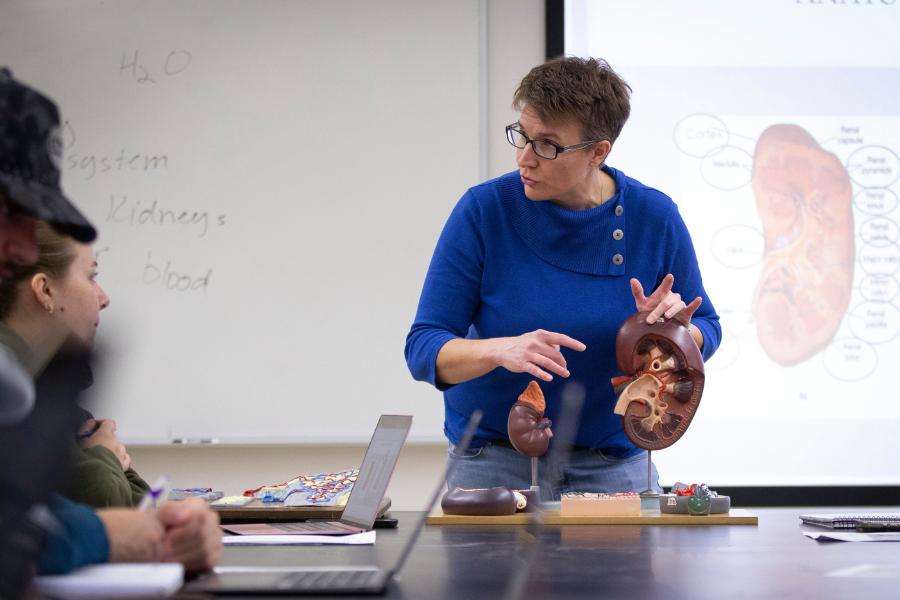New Mexico is providing free childcare for all. It’s time for others to do the same | Katrina vanden Heuvel – The Guardian

Report on New Mexico’s Universal Childcare Initiative and its Alignment with Sustainable Development Goals
1.0 Introduction: Addressing a Crisis in Child Well-being
The state of New Mexico has consistently ranked last in the United States for child well-being, a composite measure including household income, educational outcomes, and child mortality. This persistent challenge directly contravenes several key Sustainable Development Goals (SDGs). In response, the state has launched a pioneering initiative to provide universal free childcare, becoming the first U.S. state to do so. This policy represents a significant state-level effort to advance the SDGs, particularly those concerning poverty, education, gender equality, and economic growth.
2.0 The Socioeconomic Impact of Childcare Costs
The high cost of childcare in the United States presents a substantial barrier to sustainable development, creating a cycle of poverty and inequality. The economic ramifications are significant and multifaceted:
- Poverty and Inequality (SDG 1 & SDG 10): Childcare expenses push an estimated 134,000 families into poverty annually. In New Mexico, these costs can consume over a third of a single parent’s median income, exacerbating economic disparities. The state’s new program, projected to save families an average of $13,000 per year, is a direct intervention aimed at poverty reduction.
- Economic Stagnation (SDG 8): The inadequate national childcare system is estimated to cost the U.S. economy $122 billion each year in lost earnings, productivity, and revenue. The market failure, described by former Treasury Secretary Janet Yellen as “a textbook example of a broken market,” necessitates public intervention to foster inclusive economic growth.
- Gender Inequality (SDG 5): The financial and logistical burden of childcare disproportionately falls on women, leading to declining workforce participation among mothers with young children. This trend undermines progress toward gender equality and hinders women’s economic empowerment and career development.
3.0 New Mexico’s Policy as a Model for SDG Achievement
The universal childcare program in New Mexico is a comprehensive policy instrument that simultaneously addresses multiple SDGs.
- SDG 4: Quality Education: The initiative directly supports Target 4.2, which aims to ensure all children have access to quality early childhood development, care, and pre-primary education. By providing access to safe and engaging learning environments with well-trained caregivers, the program establishes a foundation for lifelong learning and well-being.
- SDG 5: Gender Equality: By removing a primary barrier to female employment, the policy enables fuller participation of women in the workforce, promoting economic independence and reducing the gender gap in earnings and career advancement.
- SDG 8: Decent Work and Economic Growth: The program stimulates the economy by allowing more parents to work. Furthermore, it promotes decent work within the care sector by incentivizing providers to offer entry-level salaries of at least $18 per hour, a significant increase over the state’s $12 minimum wage.
- SDG 1 & SDG 10: No Poverty & Reduced Inequalities: By making childcare a universal public good, the state reduces the financial strain on low- and middle-income families, directly combating poverty and reducing the deep-seated inequalities that begin in early childhood.
4.0 Funding Mechanisms and Alternative Models
While New Mexico’s program is a benchmark, its funding and implementation offer lessons for other jurisdictions seeking to align public policy with the SDGs.
4.1 Funding Sources
- New Mexico: The program is primarily funded via the state’s Early Childhood Trust Fund, endowed with revenue from oil and gas industries.
- Connecticut: Utilizes a state budget surplus to create a childcare endowment projected to fund free daycare for lower-income families.
- Washington D.C.: Increased taxes on high earners to raise wages for early childhood educators, thereby expanding capacity and improving quality.
4.2 International Benchmarks
- Denmark: Guarantees all children over six months a right to care, with costs capped at 25% for parents, integrating early childhood education into the public system.
- Canada: A national plan is being implemented to lower average childcare costs to approximately $7 USD per day, demonstrating a federal commitment to affordability.
5.0 Conclusion and Future Outlook
New Mexico’s commitment to universal childcare provides a powerful domestic model for achieving the Sustainable Development Goals. Despite a challenging federal landscape, where programs like Head Start face potential defunding, state-level action demonstrates a viable path forward. The initiative enjoys broad public support, with 92% of American parents of young children favoring such policies. As other jurisdictions, such as New York City, consider similar programs, New Mexico’s experience offers a crucial blueprint for leveraging early childhood education as a cornerstone of sustainable and equitable development.
1. Which SDGs are addressed or connected to the issues highlighted in the article?
SDG 1: No Poverty
- The article directly addresses poverty by highlighting that New Mexico has the “highest child poverty rate in the nation” and that high childcare costs “pushes 134,000 families below the poverty line each year.” The state’s free childcare program is presented as a direct measure to alleviate this financial burden, saving families an average of $13,000 annually.
SDG 4: Quality Education
- The focus on “free universal childcare” is explicitly linked to “early childhood education.” The article discusses the importance of providing children with “well-trained, nurturing caregivers in a safe and engaging environment” and mentions the Head Start program, which provides “education and healthcare to children from very low-income families,” connecting directly to early learning and development goals.
SDG 5: Gender Equality
- The article emphasizes that the negative impact of the inadequate childcare system “disproportionately falls on mothers.” It notes that “workforce participation among women with young children is declining,” which threatens their career development and future earnings. Providing universal childcare is shown as a way to enable mothers to join or remain in the workforce.
SDG 8: Decent Work and Economic Growth
- The economic consequences of inadequate childcare are quantified, costing the US economy “$122bn each year.” Conversely, providing childcare is shown to boost the economy, with a proposed program in New York City projected to “produce $670m in annual earnings” by allowing mothers to work. The article also touches on decent work by mentioning New Mexico’s policy of incentivizing higher wages for childcare workers.
SDG 10: Reduced Inequalities
- The article highlights how the high cost of childcare exacerbates inequality, noting that in New Mexico, it can consume “over a third of the median single parent’s income.” The provision of free, universal childcare is a policy aimed at reducing this economic inequality, ensuring that children from all income levels have access to the same opportunities and that low-income families are not disproportionately burdened.
2. What specific targets under those SDGs can be identified based on the article’s content?
SDG 1: No Poverty
- Target 1.2: “By 2030, reduce at least by half the proportion of men, women and children of all ages living in poverty…” The article’s focus on New Mexico’s high child poverty rate and how childcare costs push families into poverty directly relates to this target. The free childcare program is a policy designed to reduce child and family poverty.
- Target 1.3: “Implement nationally appropriate social protection systems and measures for all…” The universal childcare program described in the article is a prime example of a social protection system designed to support families, particularly the vulnerable.
SDG 4: Quality Education
- Target 4.2: “By 2030, ensure that all girls and boys have access to quality early childhood development, care and pre-primary education…” This is the central theme of the article. New Mexico’s initiative to “offer free universal childcare” and provide “early childhood education” is a direct effort to achieve this target.
SDG 5: Gender Equality
- Target 5.4: “Recognize and value unpaid care and domestic work through the provision of public services…” By providing a public service (free childcare), the state helps alleviate the care burden that, as the article notes, “disproportionately falls on mothers,” thereby formally recognizing and supporting this essential work.
- Target 5.5: “Ensure women’s full and effective participation and equal opportunities for leadership at all levels of decision-making in political, economic and public life.” The article states that the lack of childcare leads to declining “workforce participation among women,” and universal programs would “allow thousands of mothers to join the workforce,” directly supporting women’s economic participation.
SDG 8: Decent Work and Economic Growth
- Target 8.5: “By 2030, achieve full and productive employment and decent work for all women and men…” The article connects affordable childcare to increased workforce participation, especially for women. It also addresses the “decent work” aspect by mentioning New Mexico’s incentive for daycares to offer “entry-level salaries of at least $18 per hour,” which is higher than the state minimum wage.
SDG 10: Reduced Inequalities
- Target 10.2: “By 2030, empower and promote the social, economic and political inclusion of all, irrespective of… economic or other status.” Universal childcare promotes the economic inclusion of low-income families and women by removing a significant financial barrier to workforce participation and child development.
- Target 10.4: “Adopt policies, especially fiscal, wage and social protection policies, and progressively achieve greater equality.” The policies discussed—using state funds from oil and gas revenue, budget surpluses, or taxes on high earners to fund universal childcare—are examples of fiscal and social protection policies aimed at creating greater equality.
3. Are there any indicators mentioned or implied in the article that can be used to measure progress towards the identified targets?
Indicators for SDG 1 (No Poverty)
- Child poverty rate: The article explicitly mentions that New Mexico has the “highest child poverty rate in the nation.” A reduction in this rate would be a direct indicator of progress.
- Number of families pushed into poverty by childcare costs: The article cites a national figure of “134,000 families” pushed below the poverty line annually. Tracking this number at the state level would measure the program’s impact.
- Average family savings from the program: The article states the program is “projected to save families an average of $13,000 each year,” which serves as a direct financial indicator.
Indicators for SDG 4 (Quality Education)
- Number of children with access to childcare/early education: The article notes that the expanded program in New Mexico is “expected to gain access” for “another 12,000 children.” This is a key participation indicator.
- Child wellbeing ranking: New Mexico’s consistent ranking of “last in the nation for child wellbeing” is a composite indicator that includes educational outcomes. An improvement in this ranking would signify progress.
Indicators for SDG 5 (Gender Equality)
- Workforce participation rate among women with young children: The article identifies the decline in this rate as a major problem. An increase in this rate would be a primary indicator of the program’s success in promoting gender equality in the economy.
Indicators for SDG 8 (Decent Work and Economic Growth)
- Wages for early childhood educators: The article mentions New Mexico’s incentive for salaries of “at least $18 per hour,” compared to the state’s “$12-an-hour minimum.” This is a clear indicator of progress towards decent work.
- Economic cost/benefit of childcare system: The article quantifies the cost of the inadequate system (“$122bn each year”) and the potential economic benefit of a universal program (“$670m in annual earnings” in NYC). These figures can be used to measure economic impact.
Indicators for SDG 10 (Reduced Inequalities)
- Cost of childcare as a percentage of median income: The article states that childcare can cost “over a third of the median single parent’s income.” Reducing this percentage to zero for all families is a direct measure of reducing this specific inequality.
4. Create a table with three columns titled ‘SDGs, Targets and Indicators” to present the findings from analyzing the article.
| SDGs | Targets | Indicators |
|---|---|---|
| SDG 1: No Poverty |
|
|
| SDG 4: Quality Education |
|
|
| SDG 5: Gender Equality |
|
|
| SDG 8: Decent Work and Economic Growth |
|
|
| SDG 10: Reduced Inequalities |
|
|
Source: theguardian.com
What is Your Reaction?
 Like
0
Like
0
 Dislike
0
Dislike
0
 Love
0
Love
0
 Funny
0
Funny
0
 Angry
0
Angry
0
 Sad
0
Sad
0
 Wow
0
Wow
0




















































.jpg.webp?itok=0ZsAnae9#)



























